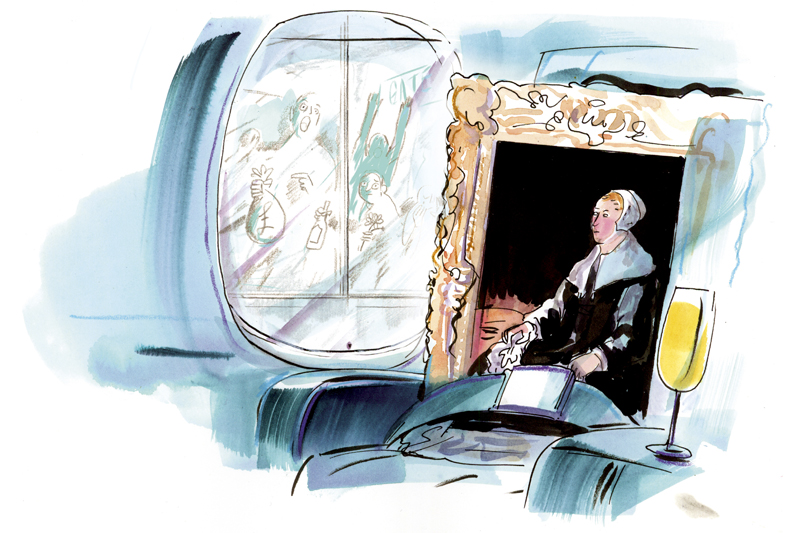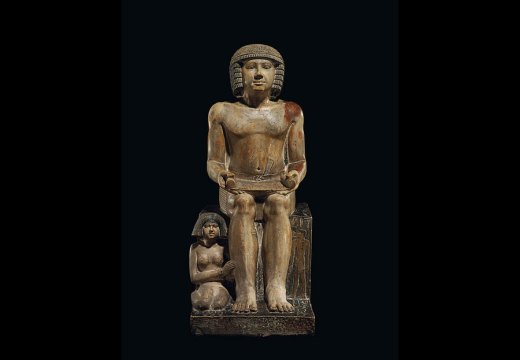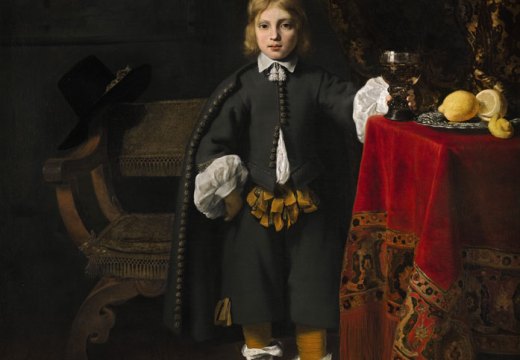The British system for granting export licences to works of art is generally considered more balanced than its counterparts on the Continent. But is it now being exploited by foreign buyers and could it be fairer to the nation’s museums?
Yes
Christopher Brown
The British system of licensing the export of works of art is widely admired for its fairness. It is fair to owners, who are able to obtain the highest possible purchase price for their works of art on the international market. It is fair to the art trade and recognises its importance to the economy of this country; a dealer represents the trade on the Reviewing Committee on the Export of Works of Art and Objects of Cultural Interest (RCEWA). It is fair to museums, giving them the opportunity, at least in principle, to acquire nationally important works of art.
It is often argued that the price of works of art and the modesty of museum acquisition budgets make this a forlorn hope. However, to take a recent example, the Ashmolean Museum’s purchase of Manet’s Portrait of Mademoiselle Claus is one instance of the system working. The owner applied for an export licence, having sold the painting (the sale itself being dependent on the grant of an export licence) to a foreign buyer for the astonishing figure of £27 million. However, it emerged that the tax liability on the painting, which had been exempted from capital taxation on a number of occasions, reduced the price to a British museum to just over £7 million. The painting evidently fell within the well-respected guidelines of the Waverley Criteria [for the assessment of objects], and was export stopped by the RCEWA for an initial three months, subsequently extended to six. During that time the museum was able to raise the money by a combination of donations from the Heritage Lottery Fund, the Art Fund and public appeal.
However, despite widespread admiration for the system, two issues are at present threatening to undermine its effectiveness. The first is well illustrated by the case of The Portrait of Mademoiselle Claus. Because the vendor was still the owner of the painting at the time the export licence was applied for, generous tax arrangements to both vendor and institution were applicable and the Ashmolean was able to raise the funds needed to match the price. If, as now happens increasingly often, the sale had already taken place and it was the new owner who was applying for the export licence, the tax benefits would not be applicable and the price would have put the picture far beyond the Ashmolean’s grasp. It is difficult not to think that overseas buyers are presently being advised to transact the purchase before the application for a licence, deliberately making it far more difficult for a British institution to match the price.
The second issue was exemplified by the recent case of Rembrandt’s Portrait of Catrina Hooghsaet, sold privately to a foreign buyer last year for £35 million. An export licence was applied for by the new buyer, thus negating any tax advantage that would otherwise have applied to a British institution (or individual). An export stop was put on the painting by the RCEWA for three months and because of the enormous importance of this superb painting, one of Rembrandt’s finest portraits, the Art Fund planned to launch a campaign to bring the painting to the National Museum of Wales. In October, just before the campaign was due to be announced, the licence request was withdrawn, with the owner keeping the painting in this country for the time being. The system, in its present form, will allow him or her to reapply for an export licence after no more than 10 years.
The export licensing system is deliberately designed to help retain major works of art in this country and make them available in public museums to the British public. It has worked well and is widely admired and respected, unlike the far more draconian systems adopted by other European countries. But we must tackle these two important issues if we wish to retain that admiration and respect.
Christopher Brown was director of the Ashmolean Museum, University of Oxford, from 1998 until 2014.
No
Bendor Grosvenor
Imagine Dame Judi Dench is waiting to board a plane at Heathrow, when she notices a customs officer hurrying towards her. ‘Dame Judi,’ he says, ‘do you have your export licence? Only, now you’re a national treasure we can’t let you out of the country. The RSC objects to your working in America, and are worried you won’t come back.’
Such cultural protectionism is silly even to consider, I know, although not so long ago many states (mainly behind the Iron Curtain) would indeed have stopped Dame Judi from travelling. And yet we still stop objects from travelling. In the UK we have complex systems for deciding what makes something ‘nationally important’, and mount public campaigns to save this or that painting from leaving the country. Which for a nation whose most celebrated museum – the British Museum – is made up of objects bought, borrowed or stolen from other nations, is ironic.
But lately there have been calls to tighten the UK’s export licensing rules. So keen is Art Fund director Stephen Deuchar to change the system that he has resorted to issuing ultimatums; if no changes are made, he said recently, the Art Fund may stop mounting fundraising campaigns to save artworks at risk of export. Deuchar is not just calling for minor amendments, either. He has demanded ‘radical’ changes, ‘real action and reform’, and believes that the current system has been ‘unable to guarantee its central task (to stop national treasures going abroad) for some time’.
However, Deuchar misunderstands what the UK’s export system is supposed to do. It is not designed to keep objects of importance in the country forever. Rather, it buys time (up to a year) to decide if an object really is important enough to spur the nation into action. It’s a last-chance saloon. If no institution steps in to match the price an overseas buyer has been prepared to pay, the work can leave. Most of the time institutions don’t step in, but that is a reflection of wider issues such as acquisition budgets and institutional energy, not the export system itself.
But let us suppose we could keep everything we deem a national treasure. In France, the state has a range of measures in its cultural arsenal to do just this. It can unilaterally declare a work a treasure, and forbid its export outright. Or it can ‘pre-empt’ a work by declaring after an auction that the state will match the price (without having bid itself, that is).
All of which is marvellous for keeping great and even mediocre works of art in France. And yet it’s not much good if you happen to own one. Imagine you wanted to sell your house, but could only market it to people who already lived in your street; you wouldn’t get much for it. The same goes for important works of art in France, which rarely fetch their full open-market value at auction, because buyers outside France do not bother to bid.
Tant pis, the French might say. And yet how a nation treats the owners of private property is a good reflection of its wider standards of fairness, and whether the rights of the individual and the power of the state are correctly balanced. Magna Carta and all that. Indeed, Protocol 1 of the European Convention on Human Rights affords the right to ‘peaceful enjoyment of possessions’.
Advocates of reform see the current system as the crooked creation of the art trade, which is a cheap jibe. That said, even though I’m a dealer I can see that some changes are required. Very rarely, owners of export-deferred pictures have reneged on a commitment to accept a museum’s matching offer. In such cases, the system still works, because the picture must stay in the UK for at least 10 years before a new application can be made. But the inconvenience to institutions who might have embarked on a fundraising campaign is considerable. It might be prudent to extend the period before a new export application can be made to 15 or even 20 years, which would act as a deterrent to such behaviour – without actually compelling someone to sell something they want to keep.
Bendor Grosvenor is an art historian and art dealer.
From the April issue of Apollo: preview and subscribe here.
Unlimited access from just $16 every 3 months
Subscribe to get unlimited and exclusive access to the top art stories, interviews and exhibition reviews.














![Masterpiece [Re]discovery 2022. Photo: Ben Fisher Photography, courtesy of Masterpiece London](http://www.apollo-magazine.com/wp-content/uploads/2022/07/MPL2022_4263.jpg)
Why are fathers so absent from art history?